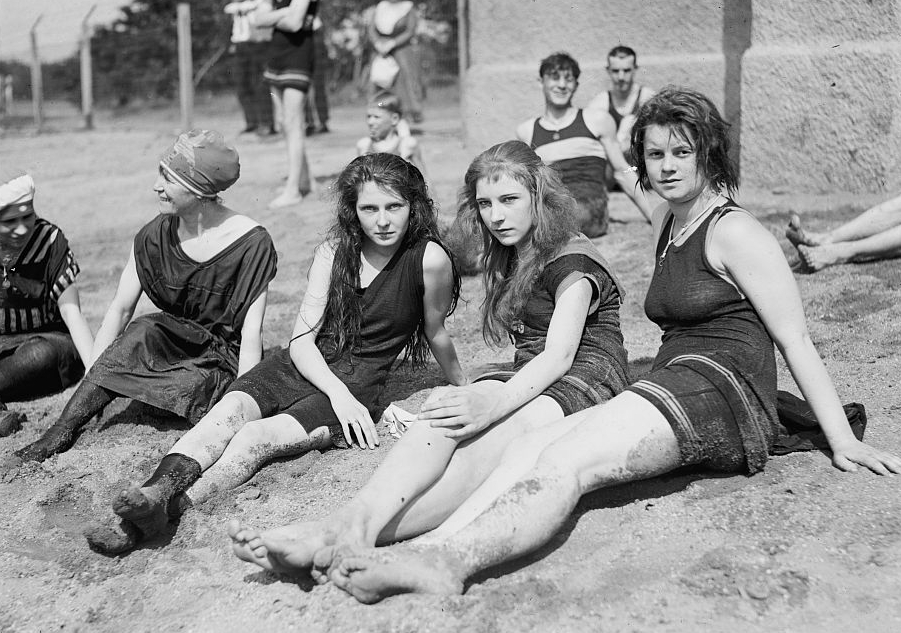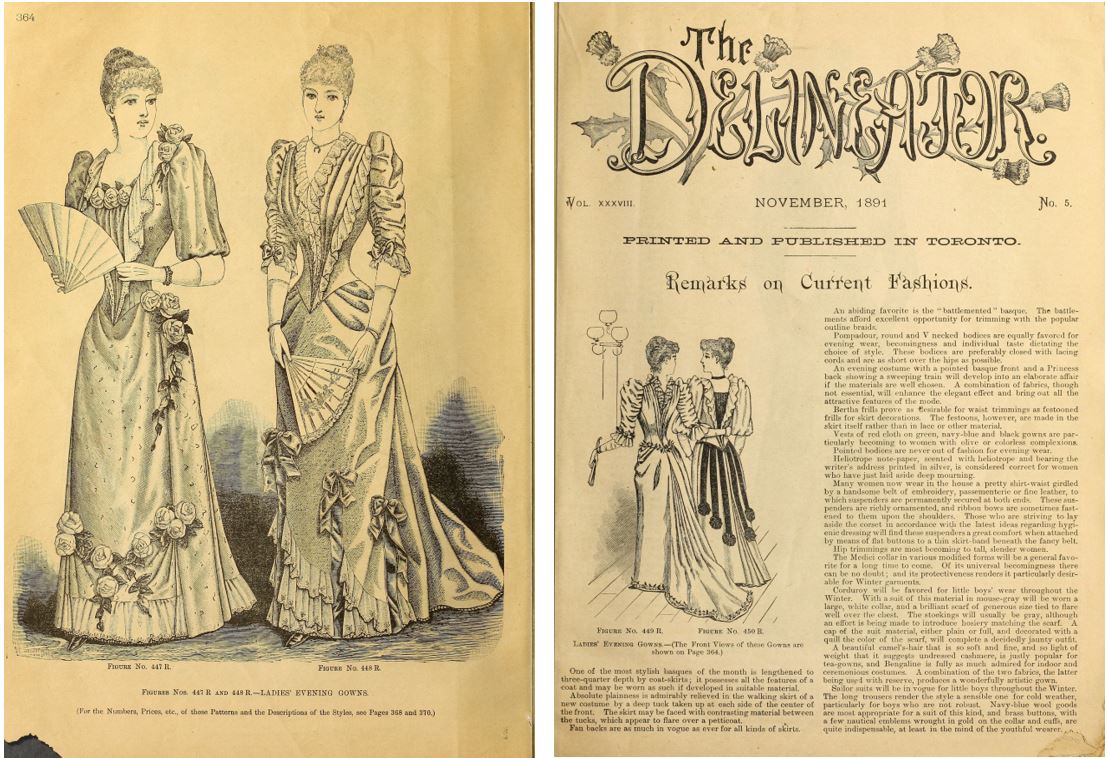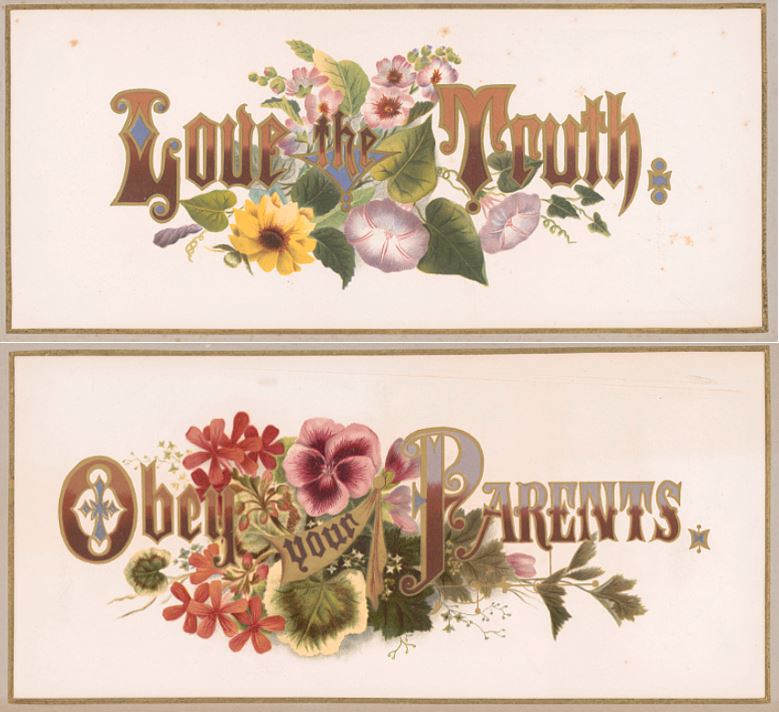By the late 19th century, summer vacations were a routine part of the lives of many people in the upper and middle classes. Time in the country, at the seashore, or at a resort was viewed as a healthful and restorative experience. However, extended vacations were out of reach of most people in the working class. Reform-minded charities sponsored wholesome vacations through vacation societies for urban working-class mothers, their children, and young, working women. These reformers believed young, single women were especially vulnerable to the dangers of the wrong types of leisure activity.
The Girl Problem in the late 19th century
Young working-class single women were taking jobs outside the home in factories, stores, and offices in large numbers by the late 19th century. Called “working girls,” these women enjoyed new economic and social freedoms. Many lived in boardinghouses in towns and cities and socialized with men unchaperoned. Middle-class social reformers were convinced this behavior was contributing to a new and very threatening “girl problem.” Reformers believed these societal shifts were causing higher rates of divorce, out-of-wedlock births, and fewer children in married middle-class families.

To solve the “girl problem,” middle-class women sought to better educate these young women in conventional manners and ideals. Reformers believed the character and virtue of women were essential to human progress. On one hand, reformers sympathized with the challenges of young working women. For example, Jane Addams noted the working girl was burdened by “the long hours, the lack of comforts, the low pay, the absence of recreation, the sense of ‘good times’ all about which she cannot share.” 1
On the other hand, reformers were seeking to impose traditional conventions on a new generation in a changing world. Many thought that the more these girls worked, the less capable they were of maintaining high moral standards. Since many of these young women were immigrants, reformers hoped to properly Americanize them. Reformers created recreation centers, clubs, vacation societies, and vacation houses for young women. The girls participated in acceptable activities and chaperones were present.
What were the immoral activities tempting working girls to sinful behavior?

Working-class, single men and women, and families might spend a day, afternoon or evening at sporting events, inexpensive theatre performances, vaudeville shows, amusement parks, circuses, menageries, dime museums, freak shows, wax displays, or horror exhibits. These options were cheap and could be enjoyed without taking time away from work. Dance halls were especially popular with single women and men. Admission was affordable, dancing was fun, and young people mixed unchaperoned.
To combat the perceived problem of these unwholesome entertainments, social reformers founded fresh air clubs and vacation societies that arranged and paid for one or two week holidays. At these holiday homes for single women or married mothers and their children, leisure time was supervised. Native-born and immigrant working-class girls were educated in acceptable middle-class manners and pastimes for women. Several organizations providing vacations for young working women were formed in the 1880s and 1890s including the Working Girls’ Vacation Society, the Jewish Working Girl’s Vacation Society, and the Vacation Farm Society.
Chaperoned vacations for working girls

By 1915, Working Girls’ Vacation Society had established a network of retreats in Connecticut, New York, and New Jersey that served over 1400 women each summer. The Jewish Working Girl’s Vacation Society sponsored vacation homes on Long Island and in the Adirondacks for Jewish working women. By 1917, the society hosted over 800 women per year and provided midweek vacations for young mothers.
The following primary source excerpts illustrate the conflicting class attitudes toward leisure time. In the first, a middle-class writer for a middle-class publication both sympathizes and criticizes the behavior of a young working girl. The second excerpt is from a publication published by a club for working girls created by middle-class reformers. In the third, the author reveals that working girls might not appreciate the wholesome, but boring, vacation opportunities offered.
Primary Source 1 – “Promiscuous Bathing” in Ladies’ Home Journal, August 1890.
Ladies’ Home Journal began publication in 1882 and featured articles and advice to mostly female, middle-class readers.
When I see a young man and woman, who have only met at their hotel, emerge from their bathing houses, the man looking like a harlequin in his red and white jersey and short blue trousers, legs and arms perfectly bare; the girl in her costume de bain (swimsuit), made tight, showing every curve, I feel that a protest is in order. A little innocent girl witnessing this asked her mother “If she might take off her dress and play in her underclothes like the ladies did on the beach.” After the swim, these young people settle themselves on the sand, rarely having any chaperon or older person with them.
Our daughters are well bred in virtue, but what about the tired little shop-girl without father or mother or advisor? Can we expect that she will behave as our own tenderly-nurtured children? She is tired and wore out with hard labor and poor food; a day and a night are all she can get of rest from the tread-mill of work. Sick in body, and alas! too often sick in heart, let us give her all the happiness and relaxation we can; but let us hinder, not help her to think that familiarity and license mean recreation . . . The freedom the morning swim introduces grows as the day speeds on. The companions of these girls, “gentlemen friends” as they are called, are generous. They ride, they dance, they flirt, and when night comes, he has his arm around her slim waist, so careless that they do not even care that they are seen.
Primary Source 2 “The Working Girls’ Vacation Society” from Far and Near, December 1890
Far and Near, published from 1890 to1894, was the journal of a national coalition of working girls’ clubs. Members of these clubs contributed articles and the editors included regular features for the improvement of the readers including advice for fashion, manners, and saving money; biographical sketches of famous women; and articles about great literature.
In speaking of the great amount of health and strength gained by spending a short vacation in the country, much credit is due to the Working Girls’ Vacation Society, whose work has gone along so quietly for the last six years. This society sends over five hundred girls every summer, for from two to four weeks, to different parts of the country; girls who never could go otherwise, for when one takes into account the wages of the average working girl, the cost of two to four weeks board and the railroad fair, besides the losing of two to four weeks’ wages, one can easily see how difficult it would be for most girls to spend their vacation in the country. The Vacation Society removes this difficulty, while a girl can feel in a measure independent, as she partly pays her own way, the society making up the remainder. . . There are some who . . . cannot afford to pay anything, and these this society sends for free.
It would be impossible to attempt to measure the amount of practical good done each year. . . How the girls enjoy the complete change from work and worry to good country air, the tramping to the mountains and the places of interest, or, if at the seaside, the bathing; the dances in the barn, the games and the music. On rainy days fancywork, crocheting, knitting, and reading make the time fly as if on wings, so that when Sunday comes around once more it really seems as if it had been only two of three days since the Saturday before.
Pale faces gain color and eyes brightened, the step that has lagged becomes more elastic, and walks are lengthened every day as each one feels the new strength gained by pure air and outdoor exercise.
Source 3 – “The Vacation Savings Movement,” by Hugh Thompson in Munsey’s Magazine, May 1913
In this excerpt, the author describes vacation charities for working women and reveals that some did not enjoy being supervised while on vacation.
An investigation made of the vacation resources of New York (for unmarried women with jobs) showed that vacation homes had been established by a few churches, settlement houses, and philanthropic societies. Three department-stores had such institutions for benefit of their own employees. The church cottages, as a rule, were open to parishioners only. In all, about seven thousand working girls out of the four hundred thousand in the city, or less than two percent of the total, could be accommodated in this way.
While good was accomplished by these different vacation homes, it was found, on inquiry among the girls, that they were unpopular because of the restrictions imposed on the inmates. In most of them the girls had to live by rigid rule; there was no freedom of action. The situation was summed up by a saleswoman who told an investigator: “Why, you can’t even look at a man if you go there! I do not want to be bound to go to prayers twice a day.
The general feeling among these self-supporting women, who toiled so hard for the greater part of the year, was that when they did have a chance to get away from the irksome routine of shop and shelf, they wanted to feel absolutely free to rest or to seek innocent amusement.
To learn more about the history of vacations:
- Exploring Vacation and Etiquette Themes in Social Studies
 Blog Posts
Blog Posts
- More books by this author
References:
- Laura S. Abrams, “Guardians of Virtue: The Social Reformers and the ‘Girl Problem,’ 1890‐1920” in Social Service Review, September 2000, pages 436-452.
- Kathy Peiss, Cheap Amusements: Working Women and Leisure in Turn-of-the-Century New York, 1986.




One thought on “Solving the Girl Problem with Wholesome Vacations”